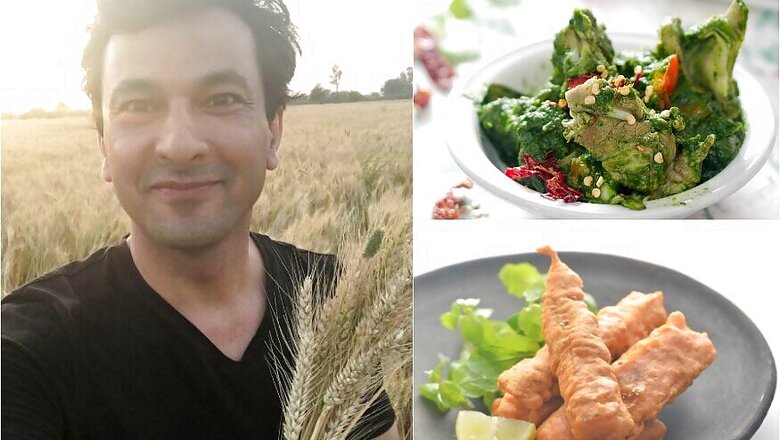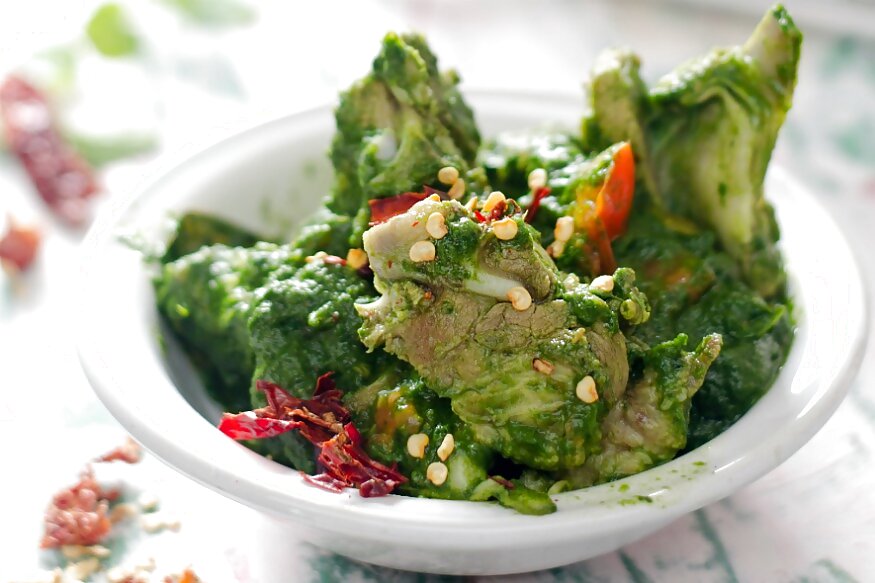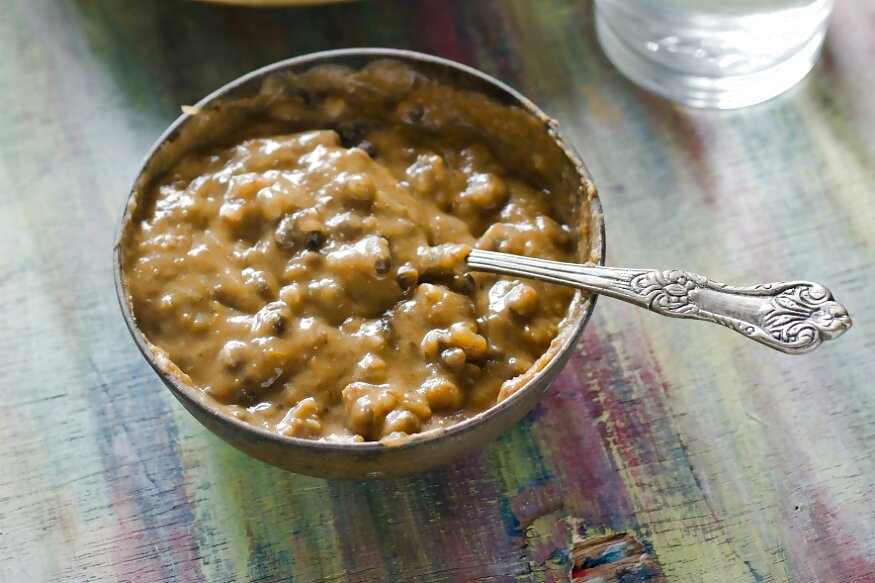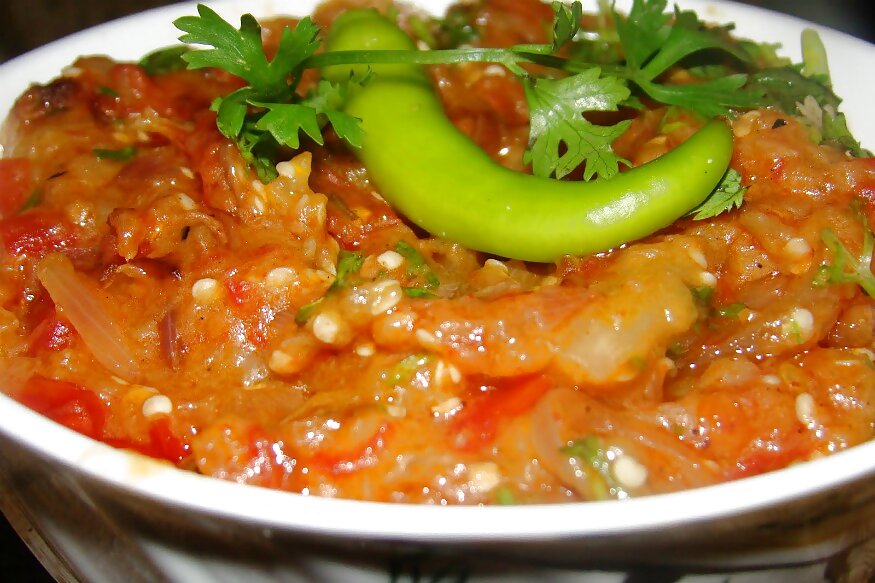
views
Like all festivals in India, Baisakhi too is celebrated with a lot of enthusiasm, gaiety and fervour across the nation, especially in the state of Punjab. The day marks the time for harvest of rabi crops and farmers pray to God to thank the almighty for plentiful crop and for equally good times ahead.
Aside from this, the day also has a religious significance, as it was on Baisakhi in 1699, that Guru Gobind Singh - the tenth Sikh Guru, laid the foundation of Panth Khalsa-the Order of the Pure Ones.
Although Baisakhi is a day of devotion, it is celebrated with a lot of joy and exuberance across the country. People wake up early to pray and prepare a series of activities for the day. Several families conduct langar which in fact are also organised by various Gurudwaras in the country. People dress up in new clothes and of course indulge in singing and dancing (Bhangra).
"Picking up huge sacks of wheat and carrying to Golden Temple is what Baisakhi was about," said award-winning Michelin starred chef Vikas Khanna in an exclusive interview to News18.com when asked what Baisakhi meant to him. "Rolling breads, large pots of kheer, spring vegetables, singing and dancing, these are some of my fondest memories of Baisakhi," he added.
Well, Indian festivals are surely incomplete without good food and since here we are talking of Punjabi food, who better than renowned chef Vikas Khanna, who has his roots in Amritsar, to tell us about delectable Punjabi food.
Here are five recipes straight out of chef Khanna's celebrated book Utsav - A Culinary Epic of Indian Festivals - a book that celebrates foods of various festivals in India. The book, in chef's own words, is the tribute of a son to his motherland. “I celebrate her every day as a festival. The festival may belong to any religion, belief . . . but for me it only belongs to you, Mother India.”
Baisakhi recipes from Utsav
Amritsari Machhi (Amritsar's Famous Batter-Fried Fish- Serves 6)

Tourists who visit Amritsar make a beeline for the many stalls selling these crisp batter-fried strips of fish all over the city. The aroma beckons hungry passers-by and will always draw diners to a table as soon as a platter of this spicy fried fish appears. The fish of choice in Amritsar is the delicately flavored catfish. Any white fish will do just as well, but avoid oily fish such as mackerel or king mackerel.
Ingredients
1 kg (about 2 pounds) catfish or any white fish fillets, cut into strips
3 tablespoons vinegar
½ teaspoon salt
Vegetable oil for deep-frying
1 teaspoon chaat masala
Pudina (Mint) Chutney (page), to serve
Lime wedges, to serve
Batter
4 tablespoons chickpea flour
2 tablespoons ginger paste
2 tablespoons garlic paste
1 teaspoon carom seeds
½ teaspoon garam masala powder
1 teaspoon turmeric
Salt
2 eggs, whisked
Method
- In a mixing bowl, rub the fish fillets with the vinegar and salt, and leave to marinate for 10 minutes.
- Drain away any excess liquid and pat the fish dry. With a sharp knife make slits or gashes in each fillet.
- For the batter, in a bowl, combine the chickpea flour, ginger paste, garlic paste, carom seeds, garam masala powder, turmeric and salt to taste. Whisk in the eggs to make a smooth batter. Coat the fish with the batter and leave to marinate for another 20 minutes.
- Heat the oil in a wok or deep pan and carefully slide in the marinated fish, one fillet at a time. Fry the fish until golden and crisp. Remove with a slotted spoon and drain on paper towels.
- Sprinkle the fried fish with chaat masala and serve hot with mint chutney and slices of lime.
Saag Gosht (Slow-Cooked Meat and Spinach Stew- Serves 4)

Somewhere amidst all the Baisakhi festivities is a pot of stew bubbling away the goat’s meat enrobed in spices and a chile-spiked spinach purée. Most often, the meat is marinated before cooking to tenderize it, but in this case slow cooking will result in melt-in-the-mouth meat submerged in a flavorful gravy.
Ingredients
500 grams (about 1 pound) fresh spinach
2 or 3 green chiles
4 tablespoons vegetable oil
1 bay leaf
2 green cardamom pods, split open
Pinch of asafetida
2 onions, finely chopped
4 cloves garlic, finely chopped
2.5-cm (1-inch) piece fresh ginger, finely chopped
500 grams (about 1 pound) boneless goat meat or lamb
1 teaspoon red chile powder
1 teaspoon ground cumin
½ teaspoon ground coriander
3 tablespoons yogurt, whisked
Salt
1 teaspoon dried fenugreek leaves
½ teaspoon garam masala (optional)
Method
- Blanch the spinach in boiling water for 1 minute. Remove and refresh under cold running water. Drain well and place in a blender with the green chilies and grind to a smooth purée.
- Heat the oil in a heavy-bottomed pan; add the bay leaf and cardamom pods and sauté until fragrant. Add the asafetida, stir and add the onions; sauté until the onions turn soft and golden brown. Add the garlic and ginger and sauté for a few seconds.
- Add the meat, chile powder, ground cumin and coriander and sauté until the water has evaporated and the meat has browned. Add the yogurt and sauté until well mixed.
- Add the puréed spinach, salt to taste and 1½ cups water; cover and cook, stirring occasionally, on a low heat until the meat is tender and the gravy is thick, about 45 minutes.
- Add the dried fenugreek leaves and garam masala and cook for another 2 or 3 minutes. Serve hot with Makki di Roti or Roti.
Langarwali Dal (Stewed Black Lentils and Chickpeas- Serves 4-6)

This is divine food indeed. Langarwali dal is an integral part of the langar or community meal served in a gurudwara. Langar, a labor of love and service, is provided everyday in Sikh gurudwaras to all visitors irrespective of caste, creed or religion. The meal, prepared by thousands of devotees in an act of selfless service, is infused with their generosity and the grace of the surroundings.
The goodness of langarwali dal lies in its simplicity, flavor and nutritive richness. A feeling of quiet comfort follows a meal of this deeply satisfying dish, especially if eaten at a langar. A long list of dos and don’ts ensures that the food is always of the best quality and free of contamination. One of the precepts governing the preparation of food is that it should never be tasted while cooking it, or before it is served to adjust seasonings, a sure sign that divine intervention (or rigorous control) ensures that each dish has maintained the same consistency and flavor over the years.
Ingredients
1 cup whole black lentils, soaked overnight
½ cup split chickpeas, soaked overnight
1 large onion, finely chopped
5-cm (2-inch) piece fresh ginger, finely chopped
5 cloves garlic, finely chopped
2 tomatoes, chopped
¼ teaspoon asafetida
1 teaspoon turmeric
1 teaspoon red chile powder
Salt
2 tablespoons ghee
1 teaspoon cumin seeds
Method
- In a heavy-bottomed pan, combine the lentils, chickpeas, onion, ginger, garlic, tomatoes, asafetida, turmeric, chile powder and salt to taste with 4 cups water and cook until soft, about 1 hour. Uncover the pan and cook the lentils until thick.
- Heat the ghee in a small frying pan; add the cumin seeds and when they begin to sizzle pour them over the lentils and mix well. Serve hot with flatbreads.
Baingan Bharta (Smoked Eggplant Purée- Serves 4-6)

Does smoky eggplant pulp perked up with spices and herbs sound familiar? No, this is not baba ghanoush of Middle Eastern fame, but a rich flavorful dish of mashed roasted eggplant cooked with tomatoes, green chiles and spices, usually served as a side dish or eaten on its own with roti or naan.
Traditionally, eggplants are roasted over hot coals, the charred flavors enhanced by the aroma of burning charcoal. In Punjab, clay sigdi are a common feature in outdoor kitchens and backyards where most of the cooking is done. Cow dung, wood, agricultural waste or charcoal fuel the sigdi that is built to suit a household’s needs. Today, portable sigdi made by lining steel or aluminum pails with clay allow one to set up a cooking station in smaller open spaces such as balconies or terraces, to give everyday cooking that special, coal-roasted flavor.
Make sure you cook plenty of this smoky treat, as leftovers are even more delicious the next day on toast, or wrapped in a hot roti as a snack.
Ingredients
2 large eggplants
2 tablespoons oil
1 teaspoon cumin seeds
2 onions, chopped
3 cloves garlic, finely chopped
2.5-cm (1-inch) piece fresh ginger, finely chopped
2 green chiles, finely chopped
2 tomatoes, chopped
1 cup shelled green peas, boiled
1 teaspoon turmeric
1 teaspoon red chile powder
1 tablespoon ground coriander
Salt
Method
- Wash, dry and prick the eggplants. Roast them over an open flame or in a preheated oven until the skin chars and the eggplants start to shrink. Cool and remove the charred skin completely. Mash the eggplants coarsely.
- Heat the oil in a pan; add the cumin seeds, and when they begin to sizzle, add the onions and sauté until translucent.
- Add the garlic, ginger and green chiles and cook for a minute. Add the tomatoes and green peas. Mix well and cook for 2 minutes.
- Add the turmeric, chile powder and ground coriander and mix well. Add the mashed eggplant and salt to taste. Stir to mix and cook for another 3 or 4 minutes.
- Serve hot with Roti or any flatbread.
Gulab Ki Lassi (Rose-Flavored Yogurt Drink- Serves 4)

Punjabi lassi are legendary not only for their size—they are often served in half-liter capacity stainless steel glasses—but also for their richness. Not only are they made from whole milk yogurt, but they are embellished with a thick layer of fresh cream on top of each glass.
Roses have been used to perfume and flavor sherbets and sweets for centuries. Their subtle floral fragrance lends itself to exotic concoctions and confections. Flavoring the sweet yogurt beverage with rose syrup and garnishing it with rose petals transforms an everyday beverage into one that is worthy of a celebration.
Ingredients
4 cups plain yogurt
¾ cup sugar
3 tablespoons rose syrup
4 tablespoons fresh cream
8–10 rose petals
Method
- Blend the yogurt, sugar and rose syrup in a blender until the sugar dissolves.
- Pour the sweet rose lassi into tall glasses and top each one off with a tablespoon of cream. Garnish with rose petals.
(Image credits: Vikas Khanna and Varun Inamdar)

















Comments
0 comment